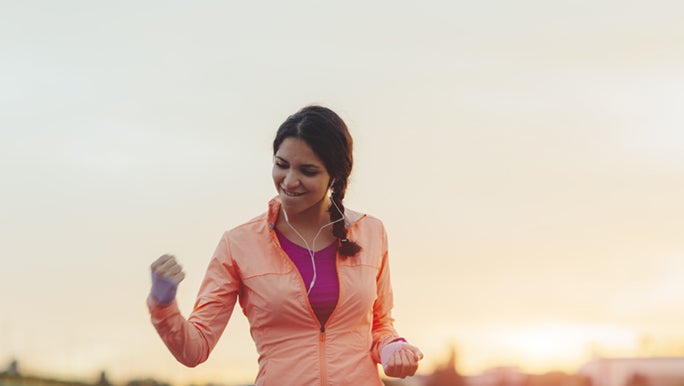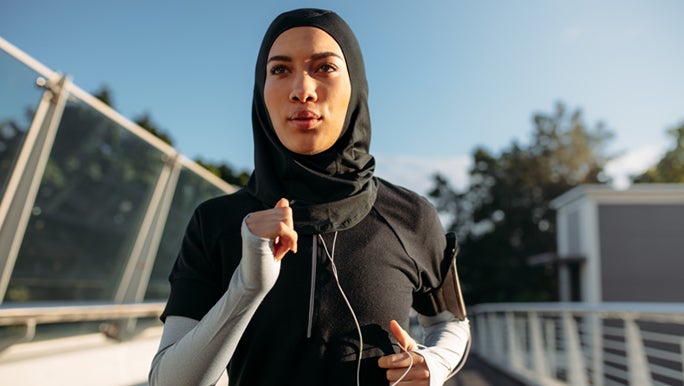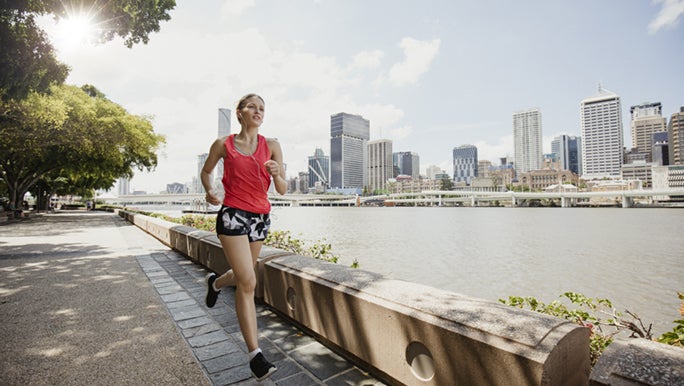What is HIIT and what are its benefits?

Key Points
- HIIT (high-intensity interval training) can be a great way to improve your fitness and cardiovascular health.
- You can incorporate HIIT intervals into most of your favourite exercises.
- You can also adapt HIIT workouts to suit a wide range of fitness levels.
HIIT (high-intensity interval training) has become a hugely popular way to get fit and improve endurance. But what exactly is HIIT training? How does it work? And is it true that it makes you lose muscle?
We chatted to personal trainer Gabrielle Petterwood, to find out more about HIIT training and its benefits.
What is HIIT?
According to Gabrielle, HIIT is an exercise structure that involves short, intense bursts of activity where you work out at maximum effort, followed by periods of rest. When you get to the end of your rest period, you dial the intensity back up again and repeat.
So does that make HIIT aerobic or anaerobic exercise? Gabrielle says that it’s anaerobic, which means that your body burns the energy to fuel your movement without using oxygen.
At a lower exercise intensity, your body combines oxygen with the fats or carbohydrates it uses for fuel to turn them into energy. At higher intensities, your body switches to burning the fuel stored within your muscles – a process that doesn’t involve oxygen.
However, your body can only burn energy in this way for quick bursts, which is why HIIT is based around these short intervals.
How long is the ideal HIIT interval?
Gabrielle says that the best length for your HIIT interval will depend on your fitness goals and current fitness level.
When you’re just starting out, a 20:40 interval – working at a high intensity for 20 seconds, then resting for 40 – may help your body adjust to your new training regime.
Then, as your fitness improves, you can aim to shorten the rest interval: perhaps try 20:20 or 30:30 intervals.

HIIT (high-intensity interval training) can be a great way to improve your fitness and cardiovascular health
The health benefits of HIIT
Gabrielle says that one of the main benefits of HIIT is that it elevates your heart rate, which can help to build your fitness. When you’re doing a high-intensity interval in a HIIT workout, Gabrielle advises, “aiming for 70-80% of your maximum heart rate to get the most benefit.”
To calculate your maximum heart rate, she adds, “just subtract your age from 220.”
She says that what makes HIIT so useful in improving your fitness levels is that it forces you to push yourself and exert maximum effort for short, manageable periods.
“It would be impossible to work out at that level for 30 minutes,” Gabrielle explains. “But when you include those rest periods, your body becomes more efficient, which may increase your fitness over time.”

As long as you’re eating right and including some resistance training, personal trainer, Gabrielle Petterwood, says HIIT workouts won’t make you lose muscle
But won’t HIIT make you lose muscle?
As long as you’re eating right and including some resistance exercise in your routine, Gabrielle says that HIIT workouts won’t make you lose muscle. “Make sure you’re eating enough, and well enough to replenish the glycogen in your muscles,” she says.
You can actually apply a HIIT structure to the full-body resistance exercises you do at home, so you also get the benefits of lifting weights.
“Remember that HIIT doesn’t have to be cardio,” Gabrielle says. “You can use it with weight training to push your heart rate up while you build muscle.”

The best length for your HIIT interval will depend on your fitness goals and current fitness level
Other types of exercises you can use HIIT with
In fact, Gabrielle says that you can incorporate most exercises into the HIIT format.
For example, you could first work high-intensity intervals into your cardio routine on the treadmill or stationary bike to contribute to your 10,000 steps per day. Then you could use HIIT for your squats and lunges, which are some of the best body-weight exercises for your glutes.
Plus the HIIT format is easy to use with your at-home gym equipment. Maybe try it while you’re doing core exercises at home. Or try incorporating dumbbells or resistance bands, which are Gabrielle’s top picks for the best budget home gym equipment. Maybe even get the kids involved in some fun family fitness challenges.

One of the main benefits of HIIT is that it elevates your heart rate, which can help to build your fitness
How often should you do HIIT each week?
“Two to three HIIT workouts, plus other training like walking or strength training, is a good amount,” recommends Gabrielle. “But it’s important to regularly give yourself a break. Don’t push your body too hard all the time.”
If you’re training for something like an endurance event, Gabrielle says it’s OK to temporarily add a few extra sessions. But she cautions that recovery is essential in sports performance. Working out too hard, too often, may cause common sports injuries.
To help reduce your chances of these, Gabrielle suggests watching out for signs of overtraining. If you experience sore muscles after your gym or at-home HIIT session, take a rest day.
Perhaps also try a free online yoga class for a little gentle stretching.
Ready to give your workout a HIIT?
Will you try incorporating HIIT techniques into your workouts? Whatever exercise you’re doing, the principle remains the same – periods of very high exertion, followed by periods of rest.
Check out more ways to increase exercise intensity
Hear from our Accredited Exercise Physiologist expert from Exercise & Sports Science Australia, Sam Rooney, on how to increase the intensity of your exercise routine. Plus, be sure to check out our free Ways To Move program for access to more video resources and a breakdown of the foundational knowledge you need to kickstart your fitness journey.
Related:
Gabrielle Petterwood is a Personal Trainer with a holistic approach to fitness, nourishing the body with fresh foods and living a healthy and balanced lifestyle to realise full-body health.
Reviewed by the healthylife Advisory Board October 2021.